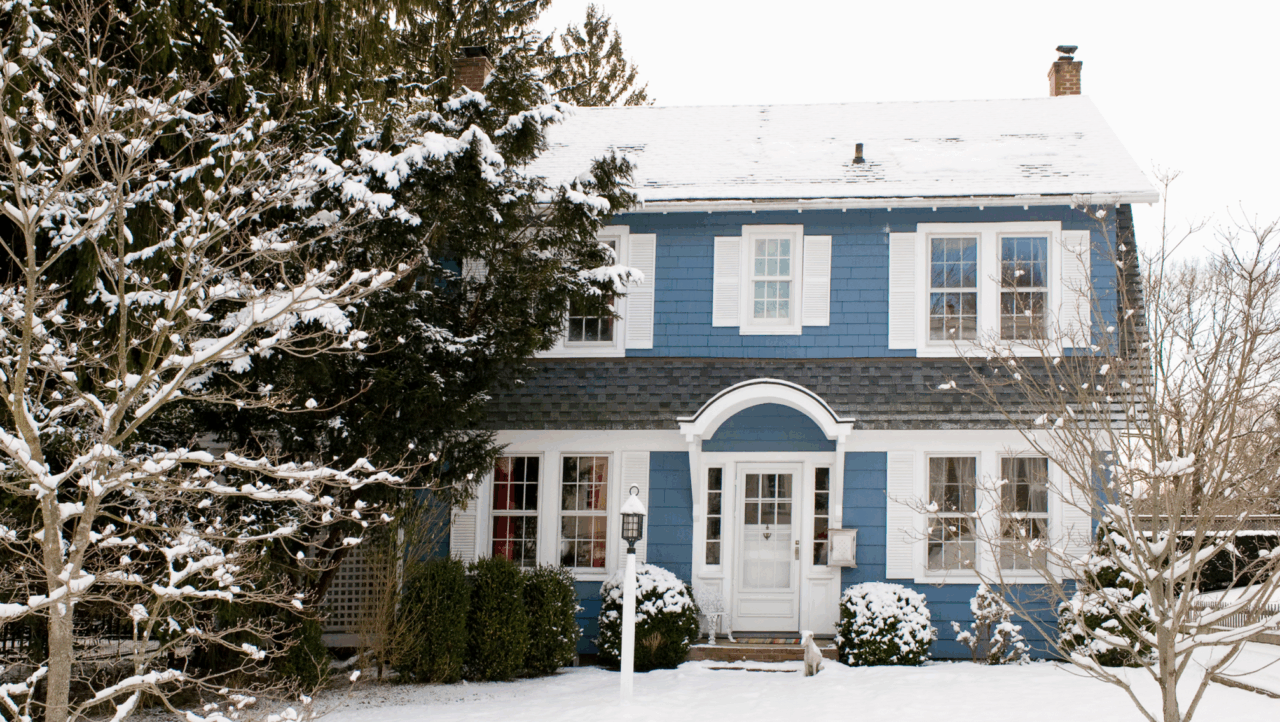How to Calculate How Much You’ll Make Selling Your Home
How much will you pocket after selling your home? Read our step-by-step guide to calculating potential profit.


Written by May Ortega on April 25, 2024
A home is the largest financial investment in most people's lifetimes, so knowing how much you might profit from the sale of your home is important — especially if you want to use the proceeds to buy a new home, send the kids off to college or generate income with another type of investment.
The calculations are highly personalized depending on your situation. How much you're likely to pocket at the closing table is determined primarily by your current equity, outstanding mortgage balance and closing costs. And don’t forget about the hidden costs that could spring up as you’re prepping your home for sale.
What are the net proceeds from a home sale?
Net proceeds are how much money you’ll make after you've accounted for all the costs that come with selling your home. Simply put, your net proceeds are your home sale price minus the mortgage payoff amount, home sale prep costs and closing costs.
Typical costs associated with selling
To determine how much you’ll make, you first need to know the expenses that usually come with selling. So, let’s get into it.
Home prep costs
Among the many to-dos when getting ready to list your home are making improvements, like a fresh coat of paint in the living room and freshening up the carpet. Sellers often make necessary repairs or eye-catching upgrades prior to listing, with the goal of selling faster and for more money. Since these investments will help you sell the home, factor them into your net proceeds.
According to a Zillow and Thumbtack analysis, the typical seller spends roughly $5,380 to complete some of the most common pre-listing home improvements.
Moving costs
Factor in how much it will cost to move out of your home, including things like truck rentals, professional movers, packing materials, storage and temporary housing costs (unless you’re staying with mom for a few days).
- Local moves of under 100 miles with two movers and one truck usually cost between $80 and $100 per hour, plus an additional $25 or $50 per hour for additional movers.
- Long-distance moves (over 100 miles) range between $2,000 and $5,000 per move, plus an average of $0.50 per pound.
Mortgage payoff amount
The mortgage payoff amount is how much you still owe on your home. You should also include paying off any home equity loans or lines of credit you've taken against the property. If you've owned your home for a long time or if your home value has increased significantly, your mortgage payoff amount will be substantially lower than your sale price (which means more money for you when all is said and done).
Unfortunately, the inverse is also true. The less equity you have, the higher your mortgage payoff amount will be in relation to your sale price. If your mortgage payoff amount is more than your home is worth, this is called ‘negative equity’ or being ‘underwater.’
Closing costs and transaction fees
Seller closing costs are one of the biggest expenses in selling a home. Expect to spend 8% to 10% of the sale price on closing costs. For a home selling at the median U.S. home sale price of $324,967, that's between $25,900 and $32,500.
The majority of these seller closing costs typically goes to agent commissions. Historically, agent commissions have made up about between 3% to 6% of the sale price, with approximately half going to the listing agent and half going to the buyer's agent. Talk to your listing agent to get a better understanding of how commissions are paid, what services they cover, and to negotiate what the fees will be for your specific transaction.
Keep in mind that 'closing costs' is an umbrella term for a wide variety of charges, taxes and fees required to close the sale of a home. Here are some of the most common expenses:
- Commissions
- Title insurance
- Transfer tax
- Escrow fees
- Prorated property taxes
- HOA fees
- Mortgage points (also called discount points)
- Attorney fees
How to calculate profit from selling a house
Once you have a grasp on the types of charges you'll end up paying, it's time to crunch the numbers to estimate your home sale proceeds.
1. Determine home value and potential sale price
The typical U.S. home has an estimated value of $349,216, but the value of your home may be much higher or lower depending on factors like the quality of the home, location and local market conditions. Your first step is determining the fair market value of your home. There are a few different ways to do this:
Hire a real estate agent: One of the first things a listing agent will do for you is provide a comparative market analysis (CMA), which can give you insight into an appropriate listing price.
Run the comps: Search for comparable recent sales on your own, seeking out similar homes that have sold within the last three to six months.
2. Get a loan payoff quote
Contact your lender to determine your loan payoff amount. Unlike the remaining loan balance figure you’ll find on your monthly statement, the loan payoff amount includes daily interest charges and any fees you’ll have to pay at closing. Payoff quotes are usually valid for a set number of days, no more than 30.
Ask your lender if there’s a prepayment penalty on your loan. A prepayment penalty is a fee charged by a lender that allows them to recoup some of the interest charges they’ll lose when you sell the house and close out the loan. Not all loans have a prepayment penalty, and those that do usually only apply if you sell within the first few years of buying. How lenders calculate the penalty varies. It could be a flat rate, a percentage of your loan balance or a percentage of the remaining interest you owe.
Example: Let’s say you bought your home 10 years ago for $175,000 with a 6% interest rate on a 30-year fixed mortgage and a 20% down payment of $35,000. Your current mortgage balance would be around $139,000. If you sold for the median sale price of $324,967, that leaves about $185,900 for staging, repairs, closing costs, commissions and other expenses.
3. Estimate cost of staging
According to Zillow research, younger buyers are more likely to consider home staging extremely or very important — 48% of Generation Z and 40% of millennial buyers. Home staging can be as simple as decluttering, depersonalizing and cleaning, or as significant as whole-home staging by a professional. If you want to give your listing more of a home-y feel, consider adding a bouquet of flowers to a room, some accent lighting decor, or maybe even a plate of cookies.
Nationally, sellers spend an average of $1,680* on staging as part of an overall $7,060 spent for all pre-sale home prep.
Example: Continuing with the figures from above, using the $185,900 left after paying off your loan and subtracting average home prep costs, your net profit is now $178,840.
4. Factor in needed repairs
Sellers might pay for repairs in one of three ways:
- Take care of needed repairs pre-listing.
- Take care of repairs before closing (at buyer's request).
- Provide a credit at closing to cover the cost of repairs.
The amount you'll end up spending depends on the repairs that need to be done on your particular home, but taking care of any major items before listing often makes the most financial sense. New mechanicals or upgrades can help make your home more appealing to buyers, which can drive more and higher offers. It also allows you full control over who completes and how much you pay for repairs, instead of letting the buyer call the shots with a dollar amount they think will cover future repairs. If you’re weighing whether to make any repairs at all, 71 percent of sellers said they made at least one ahead of listing their home, according to the 2022 Zillow Consumer Housing Trends Report. And nearly three out of four home sellers agreed in a study conducted by The Harris Poll that making improvements helped them sell.
Example: Buyer concessions, which are the part of the negotiation when buyers ask for a credit or discount on the sale price, typically cost 1% of the sale price, or $3,250 in our scenario. That brings your net profit down to $175,590.
5. Subtract agent commissions or marketing costs
As mentioned earlier, commissions may total between 3% and 6% of the sale price, depending on how you decide to sell your home, the scope of your agent’s services and your agent’s specific fees.
You can also save on agent commission by selling ‘for sale by owner’ (FSBO), but you may still have to pay a 3% commission to the buyer's agent (this fee is also negotiable). The vast majority of buyers choose to work with an agent, and offering them a commission makes those agents more likely to show their clients your home.
If you sell FSBO, remember that all selling-related tasks fall to you, including marketing, photography, advertising and more. You might also opt to pay an agent a few hundred dollars to get your listing on the local home listing service.
Example: Let’s say you go the full-service agent route and end up paying the upper end of 6% in commissions. Based on the median U.S. home sale price of $324,967, this is $19,498. That would bring your net profit down to $156,092.
6. Don't forget transaction fees
No matter how you sell your home, all sellers pay fees to sell a home, whether they end up coming out of sale proceeds or out of pocket. Seller closing costs include things like transfer taxes (in some cities and states), prorated property taxes, prorated utilities, escrow fees and a title insurance policy for the buyer. Overall, these seller closing costs can add up to 2% to 4% of the sale price, depending on where you live and the financial details of your sale.
Example: Again using the median U.S. home sale price, 2% to 4% is between $6,499 and $12,998, bringing your potential profit down once more, to $143,094, assuming your transaction costs are on the higher end at 4%.
In conclusion, the total profit for the home in this example is $143,094 And you can use that money to buy your next home (we got you), or set it aside for a college fund, or put it towards some property that can bring more cash into your pocket. And hey, you can even treat yourself a little. After all, selling a home is no simple task. Though, we hope this has made it a little easier.
*All pricing data is based on national average cost estimates using data provided by Thumbtack pros and additional research, actual prices may vary based on city and supply. Details about your specific project and local rates can impact costs.
Ready for a new address?
Get an instant cash offer or list with a local partner agent.
Explore selling optionsRelated Articles
Sell your home with a winning strategy
Here’s how to maximize your home sale with the right selling plan.

Build a smart selling plan
Talk to your agent about their marketing approach - especially online - to ensure you’re getting the best possible price for your home.


